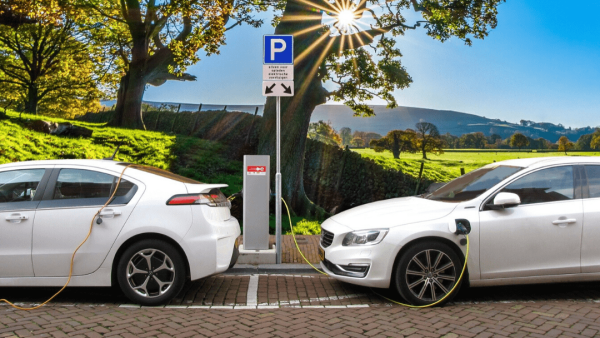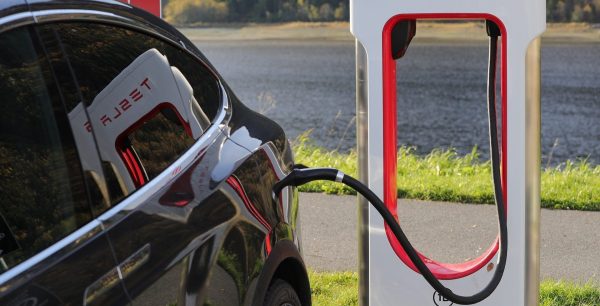
Over time electric vehicles (EVs) have grown incredibly in popularity. Not only do these innovative forms of transportation bring environmental benefits, but economic advantages for consumers and businesses as well. With this being said, EVs are anticipated to continue to grow in popularity as innovation improves and the technology becomes more readily available for all. In fact, with hybrid, plug-in hybrid and all-electric vehicles becoming easier to invest in, many predict that 2020 will be the year of the electric vehicle.
A Slow Climb to Popularity
The first small-scale electric car was introduced over 100 years ago and has changed drastically since then. Not only has the purpose of the electric car changed, but the tools used and the technological specifications have as well. The first electric car was announced in 1890 by William Morrison and is seen to have been more of an electrified wagon with a top speed of 14 miles per hour. It wasn’t until the early 1970s when electric vehicles truly started to be explored in-depth. During this time, soaring oil prices and gasoline shortages forced many small automakers to explore alternative fuel options for vehicles. While EVs were in play during this time, their capabilities were still limited as most models only accelerated to speeds of 45 miles per hour. As technology advanced, the popularity of EVs did not truly begin until the 1990s when environmental policy and discussion surrounding clean resources were introduced.
As well, many believe that there were two business events that helped to drive popularity and growth for electric vehicles; the introduction of the Toyota Prius and the noise that the small Silicon Valley startup Tesla Motors made. After these EV introductions happened, other automakers including Nissan and Chevy started to focus and accelerate work on electric cars.
Fast forward to 2020, when nearly every automaker is working to create electric vehicles, new battery technology, or alternative charging options. Electric cars can’t seem to stay out of the news!
The Current Stage of EVs
As mentioned previously, the evolution of electric vehicles has been a lengthy process. So it’s important to highlight where EVs currently are as these innovative forms of transportation could influence numerous industries and businesses.
Production Popularity
Over the last decade, the popularity of electric vehicles has increased greatly. Apart from being seen as advantageous for automakers to jump on to become ‘cutting-edge’, the increased focus on the environment has also sparked many consumers to be interested. In terms of production popularity, Consumer Reports states that even with a small percentage of the passenger vehicle market making up only 1.3% of new vehicles sold in 2018, an electric boom will happen. In fact, IHS Markit estimates that by 2025, the share of electric vehicles sold in the US will grow to 7.6% as charging infrastructure will expand, regulations favouring electrification will continue, and consumers interest will increase. With such growth expected for EVs, many transportation and logistics based businesses are looking at how these innovative vehicles can be implemented in their business goals.
Affordability
When EVs were first introduced, it goes without saying that they were not as affordable as the technology and resources are now. So with an increased level of attention from businesses, consumers and governments, the demand and interest continues to grow in favour of electrification. Resulting in more work being completed to move such projects forward not only in terms of technological innovation, but affordability as well. This concept of affordability has been continued past the initial price of the vehicle as there are additional economic benefits of using EVs. Not only are there attractive electric-vehicle tax credits, but the increased number of charging stations available make it more cost-friendly in terms of filling up the tank.
Government Encouragement
There are numerous incentives from the government to encourage the purchasing and development of electric cars. Not only does this include tax credit and rebate programs as previously mentioned, but emissions programs that focus on reducing or achieving net-zero emissions goals. When speaking to Canada’s greenhouse gas emissions reduction target, a goal of achieving net-zero emissions by 2050 has been set so encouraging technology that aids the success of this goal is in progress. In fact, BloombergNEF has predicted that the year 2020 will focus greatly on a low-carbon transition in energy and transportation.
Electric Vehicles and the Future
In a recent article by The Guardian, 2020 was accounted to be the year of the electric vehicle. While this prediction focuses more on Europe, it is still expected that the rest of the world will feel the effects of electric vehicles as technology is continuing to advance and governments are continuing to support its growth in various ways.
What Does This Mean for Businesses?
The steadily increasing popularity of electric vehicles does pose various implications for businesses. Not only does this affect what means of transportation organizations that focus on delivery and logistics will use or implement (for example electric fleets), but what improvements they may make to encourage electric car use among their employees (for example installing electric charging stations in workplace parking lots). Regardless, of how you may think the EV revolution may affect you or your business, it’s critical to stay up-to-date with news regarding this type of innovation. Signing up for our newsletter is a great way to do this as we are constantly looking for new ways that innovation can influence telematics and business needs, in addition to providing great updates on industry trends. Scroll down to sign-up!










